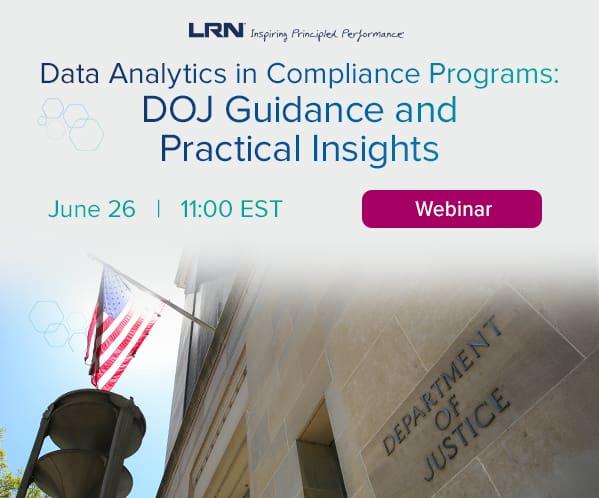4 Techniques for Auditors
While data analytics in audit has been discussed for more than two decades, most internal audit teams are just beginning to make serious investments to embed analytics in their engagements and processes. Vendors highlight techniques such as predictive and prescriptive analytics; however, it is often unclear what these techniques entail and how they can be applied by audit departments.
with co-author Barton Edgerton
Data analytics has been discussed by the audit community for decades. Auditors and other assurance professionals of a certain age might well remember “computer-assisted auditing techniques,” better known as CAATs. Data analytics and CAATs were supposed to revolutionize audit and usher in an era of greater efficiency and audit coverage. Yet, despite the hype, this revolution never seemed to materialize.
Now the hype has shifted to advanced analytics techniques, such as predictive analytics, and related areas such as machine learning and robotics. While these tools and techniques will surely become very important, today’s typical audit department needs to first focus on getting the basics right.
This is the year data analytics in audit is truly taking off. CEB, now Gartner, recently conducted a survey comprising more than 270 global audit departments. We surveyed analytics use in 34 risk areas, ranging from fraud to M&A, and found that while the average organization has been using analytics for a year or longer in just six of them, they plan to apply analytics in the remaining 28 over the next year. Furthermore, 2017 marks the first time a typical audit department will use analytics in most phases of the engagement process, as well as in audit planning and the annual risk assessment.
Over the last year, we have had hundreds of conversations with heads of audit – many of whom are just now beginning to make serious investments in their analytics capabilities. Among the most common challenges we hear is “What analytics techniques should audit departments use?”
Regardless of the risk area in which analytics is applied or how it is used by assurance functions, there are four techniques of analytics work, each designed to answer a specific question.
- Descriptive analytics are used to answer “What happened?” This is the most common analytics technique. It is a backward-looking technique, often used in both audit planning and fieldwork. The results can be used to segment populations or other data, as well as produce red flags indicating potential control breakdowns.
- Diagnostic analytics are used to understand “Why did it happen?” This deeper form of analysis is used to probe for potential cause-and-effect relationships. Diagnostic analytics can give auditors the reasons behind the findings of descriptive analytics. This technique is most used during data analysis in the fieldwork phase of an audit.
- Predictive analytics are used to understand “What will happen?” Using these techniques, auditors can spot patterns and correlations and suggest potential future outcomes. This is a valuable tool in identifying the risk levels of different audit entities or in stratifying segments of a population by risk. The heads of audit we work with who employ this technique apply it in both audit engagements and their department planning activities. While this technique can include advanced statistical machine learning techniques, often simple regression models can provide powerful predictive insights.
- Prescriptive analytics help answer “What should I do?” This technique is a set of decision support tools that can help humans make better decisions by prescribing a list of options. Such tools can be used to help the head of audit determine where to best place resources or, at the end of an engagement, identify how to best remediate issues. Prescriptive analytics enable full autonomous machine decision-making and could be used to trigger an autonomous decision taken by a smart machine based on specified criteria. This is the most advanced technique and is most likely to be applied by audit departments that are relatively far along in their analytics journey.
While these four techniques are distinct, they come together during audit engagements. Suppose an audit team is tasked with a somewhat routine travel and expense audit. They might first apply descriptive analytics to available data to identify duties violations. Perhaps they discover 53 instances where the approver for expenses over $5,000 was not the manager of the employee submitting the expense, and that the instances were present in just a few geographies. This is an example of descriptive analytics helping to identify red flags and scope the engagement.
However, these analytics do not answer the question “Why?” Further investigation is necessary to identify the reason(s) for the anomaly. Here, diagnostic analytics might uncover that in most cases the employee’s manager had recently left the company. From here, predictive analytics can be used to model the likelihood that similar red flags will pop up in the future. Finally, prescriptive analytics can be applied to help understand which changes to the control environment might have the greatest impact on reducing the number of control failures.
Leading organizations are taking advantage of the competitive edge data provides by employing these types of analytics. Each of the four techniques plays a distinct role in determining what audit teams can achieve with available data. While predictive and prescriptive analytics may require a bit of advanced training, none of the four require any more advanced technology, making them more cost-efficient and less daunting than many assume.



 Malcolm Murray is Research VP and Fellow at Gartner. He works with heads of Audit at Fortune 500 companies to better leverage data analytics, automation and other assurance functions to drive actionable change within their organizations. A Chartered Financial Analyst, originally from Stockholm, Sweden, Malcolm holds an M.Sc. in Business and Economics from the Stockholm School of Economics, an MBA from INSEAD and a Master of International Management from HEC in Paris.
Malcolm Murray is Research VP and Fellow at Gartner. He works with heads of Audit at Fortune 500 companies to better leverage data analytics, automation and other assurance functions to drive actionable change within their organizations. A Chartered Financial Analyst, originally from Stockholm, Sweden, Malcolm holds an M.Sc. in Business and Economics from the Stockholm School of Economics, an MBA from INSEAD and a Master of International Management from HEC in Paris. 








